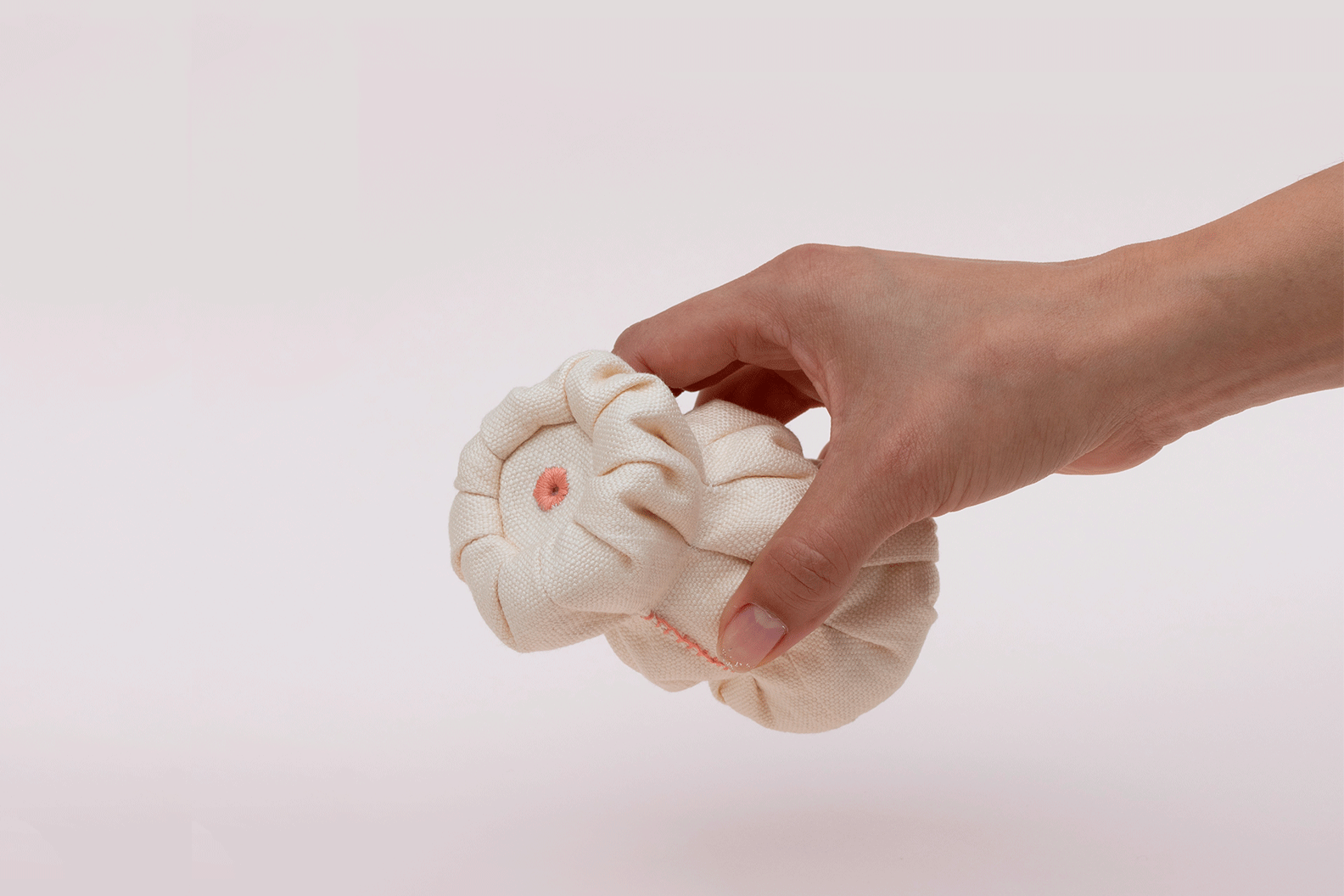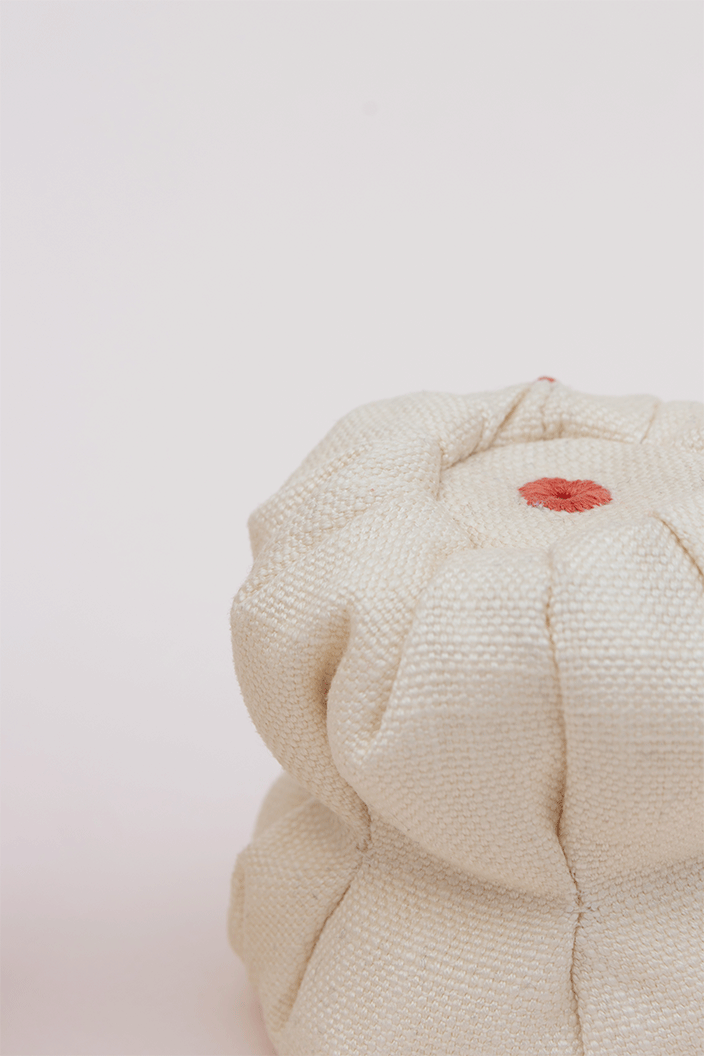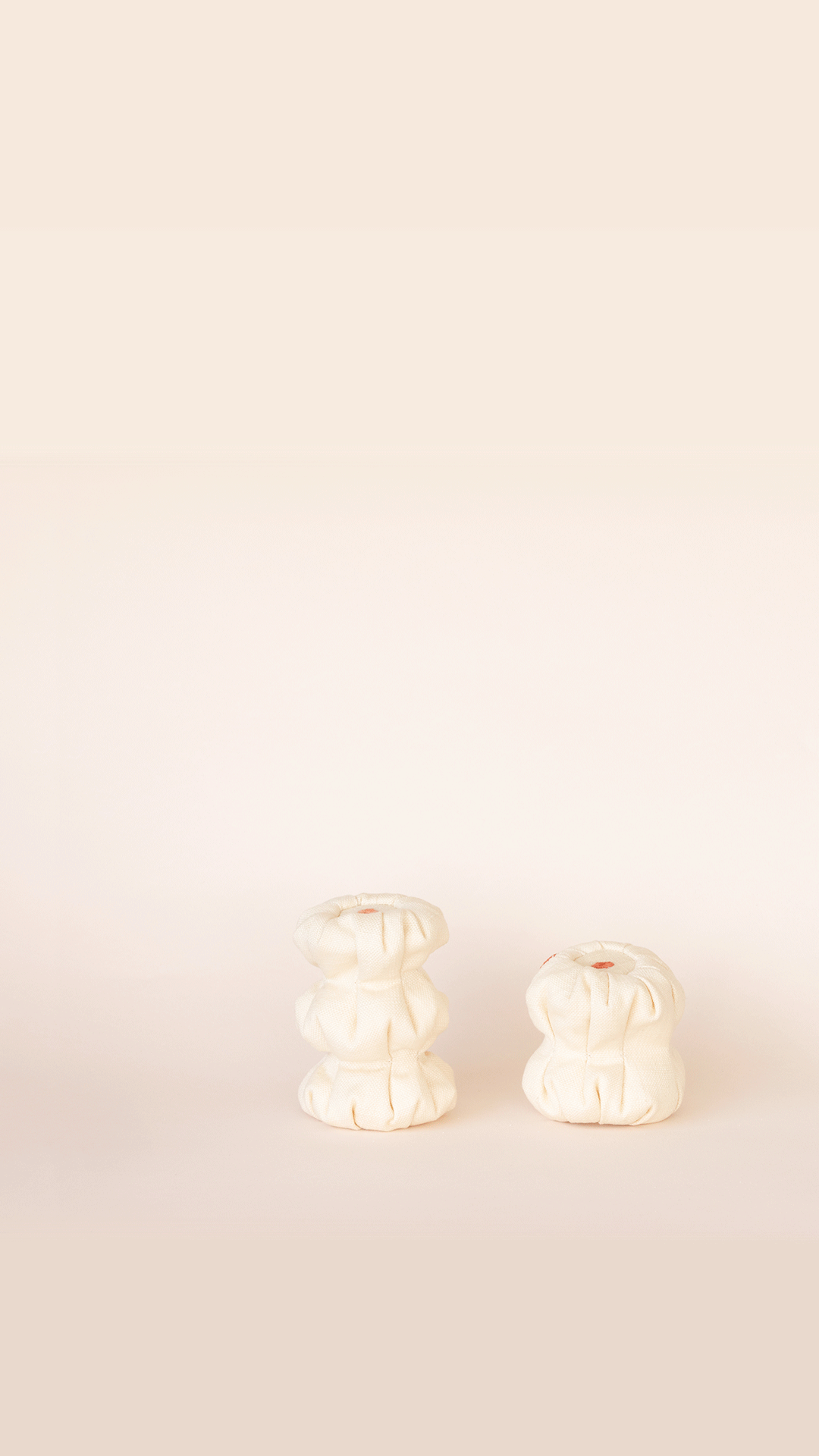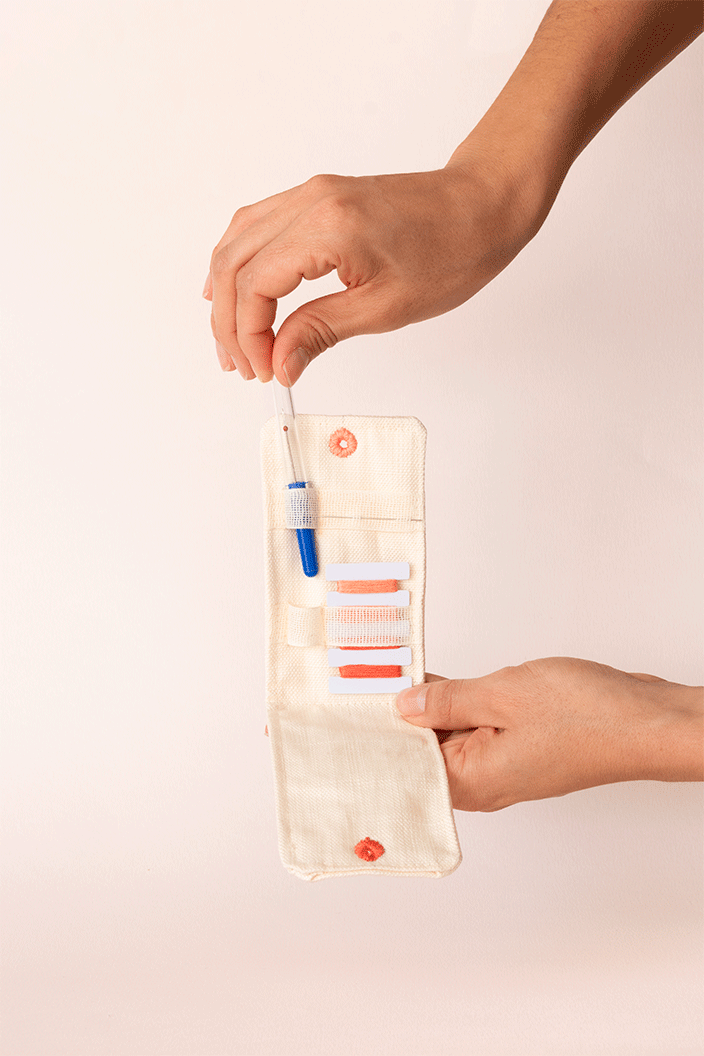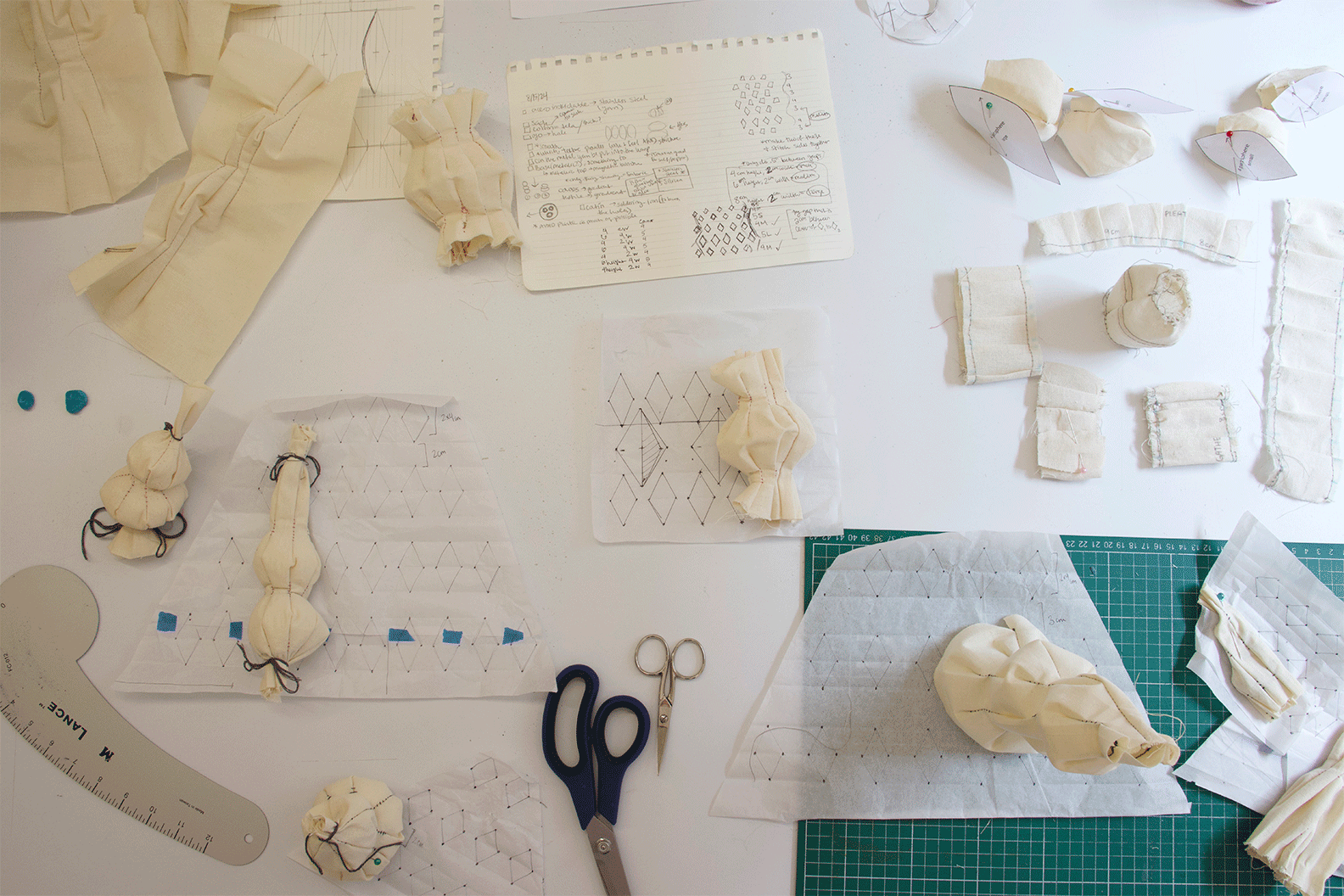Labor Shaker A commission by Decode Group show
Creative direction: Marisol Centeno. Product Design team: Jasmin Love Nicole Eguiza Sandy Luz Pérez. Date: 2024
labor. (Del lat. labor, -ōris). 1. f. Acción y efecto de trabajar. 2. f. Adorno tejido o hecho a mano, 3. f. Obra de coser, bordar, etc. 4. f. Labranza, en especial la de las tierras que se siembran.
Textiles, often referred to as humanity’s second skin, have long been the quintessential covering for our species. The history of human civilization cannot be fully understood without acknowledging the role of spices like salt—not merely for their utility but for their deep ritual significance. Here, warp and weft intertwine with the fabric of our history, as in so many aspects of life.
From ancient times, farmers across cultures—Mayans, Romans, and others—gathered their spices in baskets and cloth sacks, using them for storage and trade. Yet, this humble sack transcends cultural boundaries, embracing practices and traditions that endure across both Eastern and Western worlds. Its simplicity and timeless functionality remain vital to agriculture and the trade of countless goods, including salt and pepper.
Labor is a textile exploration that reimagines the salt and pepper shaker through the lens of textiles. It seeks to bring the journey and origins of spices to the dining table while celebrating the sack as an object that transcends functionality and tradition—an indispensable ally in the evolution of agriculture and commerce throughout human history.
The collection's design draws inspiration from the irregular shapes and folds that a sack forms when closed, whether by stitching, a drawstring, or a knot. The pattern explores and reveals the body and fluidity of the sack as it empties, serving as a metaphor for the abundance that both salt and pepper have signified throughout humanity's story.
The patterns, fibers, weaves, and stitches of these sacks are living cultural testimonies to the origins of the spices we consume. These sacks also dress the aisles of colorful markets, showcasing beautiful spices that fill the air with rich aromas, inviting us to connect with their rich histories.
This object, the sack, ties us to our humanity. Even though industrial packaging has evolved, the use of the sack still relies predominantly on human hands. Their longevity makes it difficult to imagine a time when they might be replaced, despite the creation of countless packaging alternatives.

